Get PeakVisor App
Sign In
Search by GPS coordinates
- Latitude
- ° ' ''
- Longitude
- ° ' ''
- Units of Length

Yes
Cancel
Share ×

Scan the QR code and open PeakVisor on your phone
❤ Wishlist ×
Choose
Delete
Situated at the southernmost point of South Africa (and the African continent) is Agulhas National Park. This coastal haven features 4 named mountains along the shores of the Western Cape. The highest and most prominent of these hills is Soetanysberg, at 254 meters (833 ft).
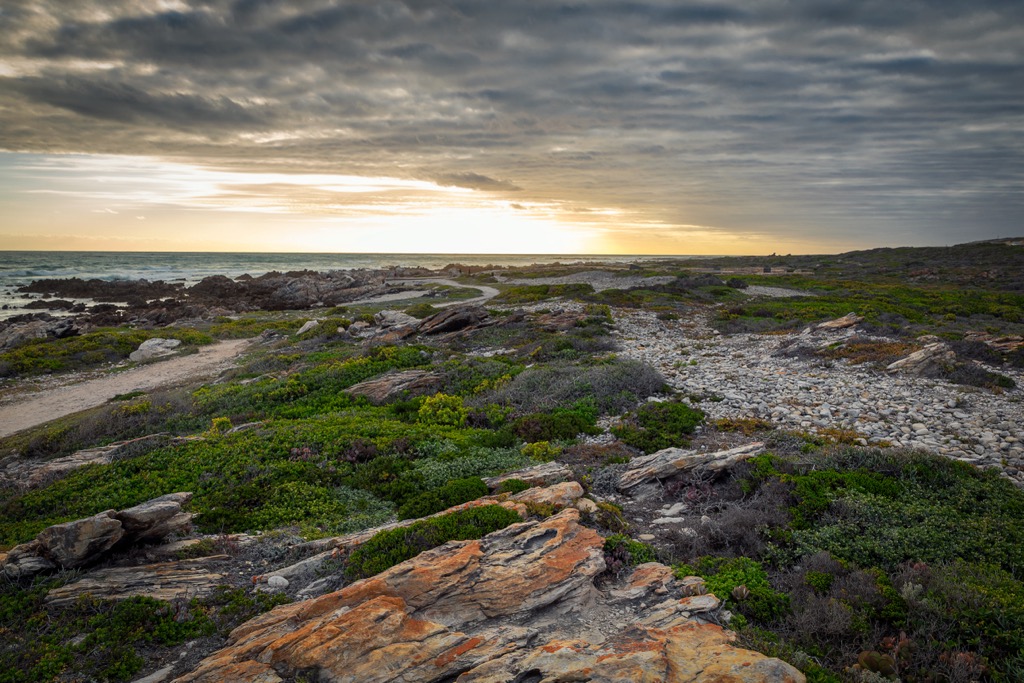
Located in the southern Overberg region in the Western Cape, Agulhas National Park encompasses the southernmost tip of Africa, known as Cape Agulhas. This low-lying, rocky park envelopes marine and coastal ecosystems situated on the Agulhas Plain.
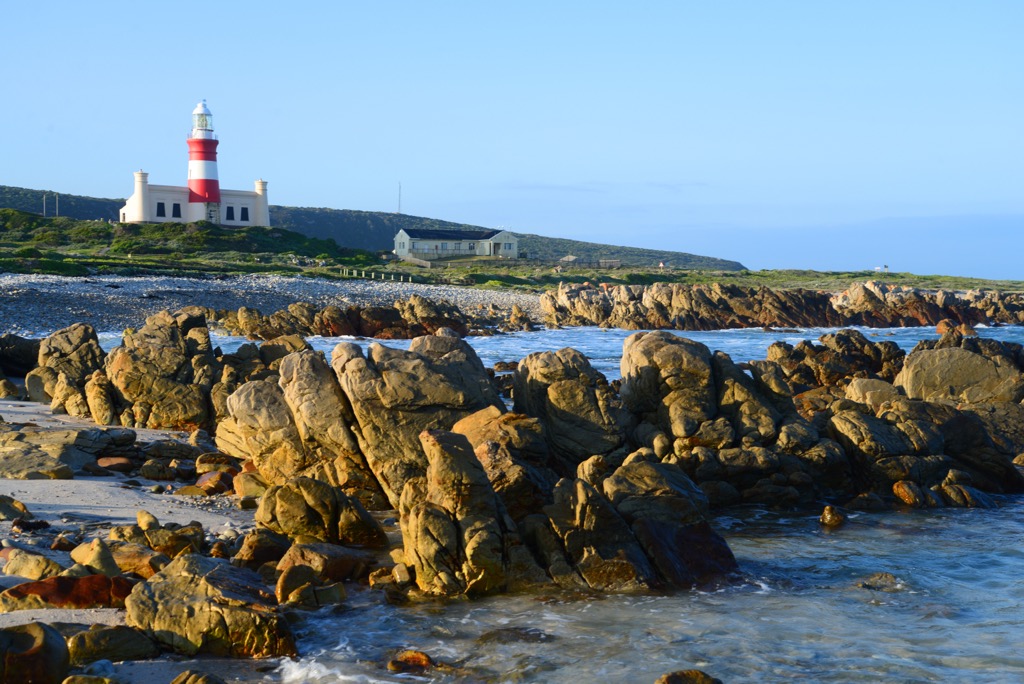
Diverse landscapes define Agulhas National Park, reflecting the influence of the frigid Atlantic and warm Indian oceans that determine the region’s unique climate.
The park is 223 km (139 mi) southeast of Cape Town and spans approximately 21,000 ha (51,892 ac). It’s one of the smallest national parks in South Africa, but its proximity to the South African capital and its location as the most southern region of the African continent attracts local and international visitors.
Named after the Portuguese word agulha, meaning needle, the park features sharp outcrops scattered along its coast. Early Portuguese explorers in the 15th and 16 centuries sailed across this stormy region of gale-force winds and strong ocean currents with large swells. Such tempestuous conditions caused over 140 shipwrecks from the Cape of Good Hope to Agulhas to Arniston, many of which are still littered along the shores.
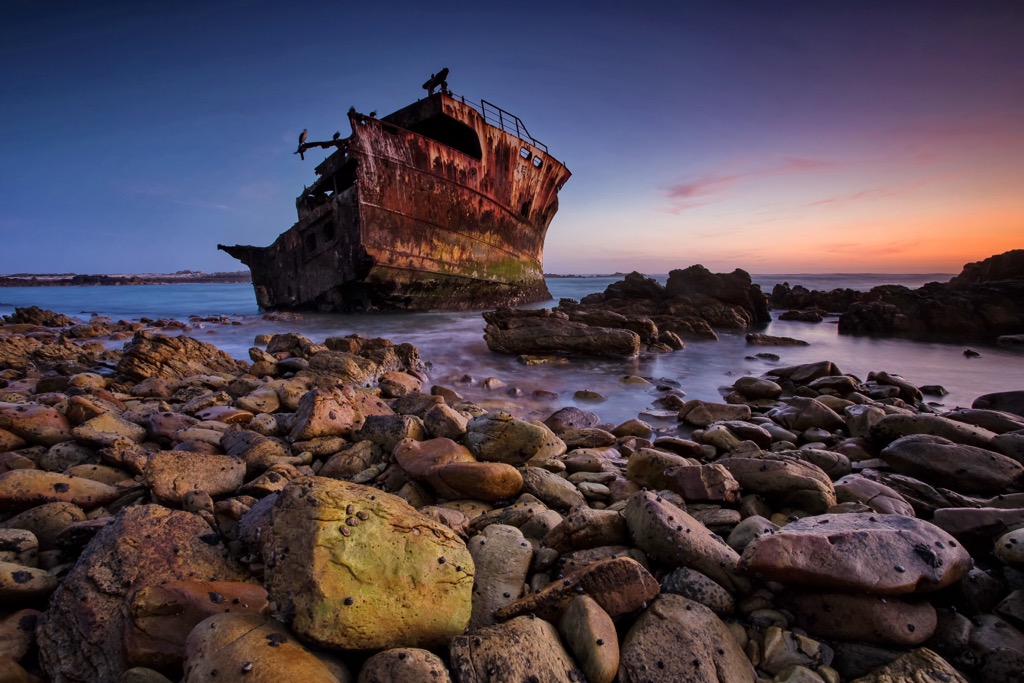
In addition to the rugged rock formations, Agulhas National Park features extensive dune systems, playing a crucial role in protecting the coastline from erosion and serving as habitats for various plant and animal species. Diverse marine life has colonized the vibrant coastal intertidal zone and seafloor.
Fynbos covers much of the park’s inland topography. This Mediterranean shrubland ecoregion is endemic to South Africa, particularly in the Western Cape’s coastal region, and has adapted to the harsh windy conditions, nutrient-poor soil, and frequent fires.
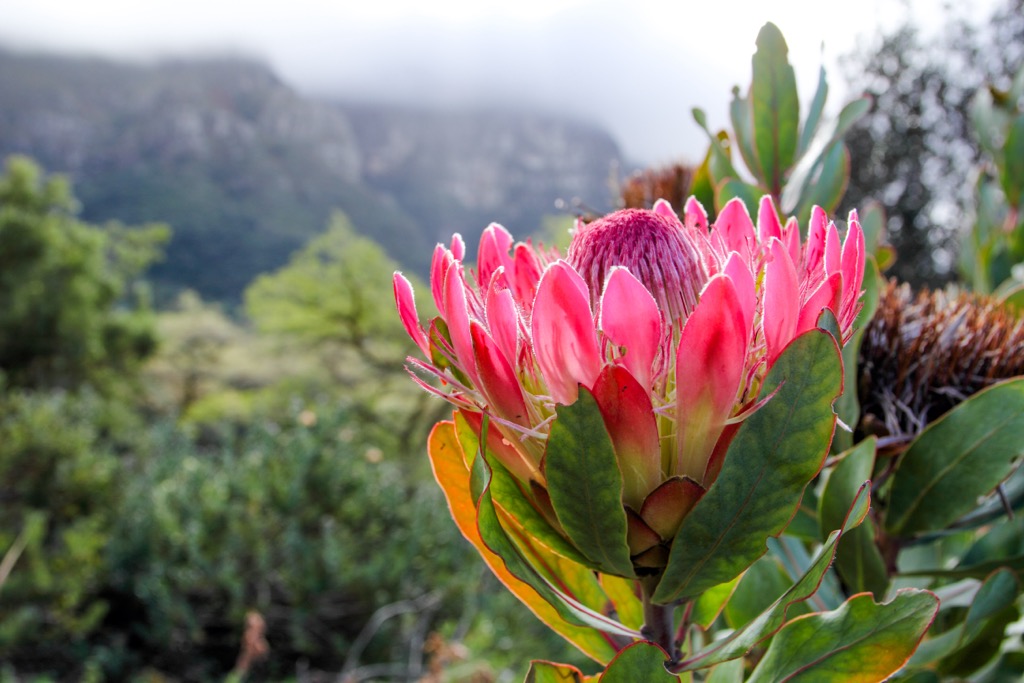
The park offers several hiking trails that allow you to explore the region's natural beauty. The trails wind through fynbos-covered hills, coastal dunes, and breathtaking viewpoints. Besides Soetanysberg, the park’s tallest mountain, the other three named peaks are Waterford Hill, Sandberg, and Carruthers Hill.
Rooted in the Malmesbury Group’s ancient sedimentary and volcanic rocks, Agulhas’s history unfolds in layers. These include Bokkeveld Group’s sandstone and shale formations, the Cape Supergroup’s diverse sedimentary rocks, and Cretaceous deposits with marine fossils.
The convergence of the Atlantic and Indian oceans at the park’s coastline shapes distinctive features of rocky headlands, everchanging dunes, and eroded cliffs.
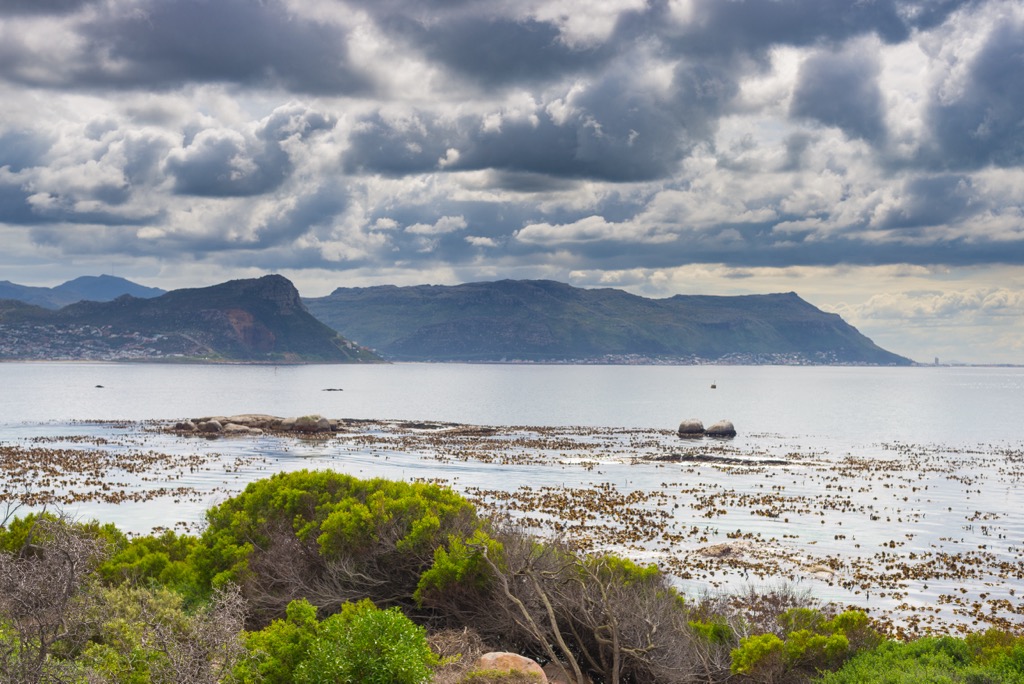
The Agulhas peninsula is smack in the center of The Cape Floristic Region, the smallest among the six globally recognized floral kingdoms. Within the CFR’s boundaries, more than 9,000 vascular plant species feature an astonishing 69% rate of endemism. The CFR is defined by the vibrant Fynbos ecoregion.
The Fynbos ecoregion, which translates as ‘fine bush,’ is an intricate mix of shrubs, grasses, and flowering plants. The Fynbos occupies an incredibly small pocket of land within the Western Cape, possibly no larger than the Netherlands. The IUCN lists most of the endemic species within the Fynbos as endangered because of this small area has historically faced many threats such as resource extraction and development. However, climate change may come to represent the biggest threat yet. Even a small shift in precipitation patterns could threated the extinction of thousands of endemic plant species.
Within the Agulhas National Park, you’ll find species such as the Elim conebush (Leucodendron elimense spp. Elimense), the Bredasdorp conebush (Leucodendron laxum), and limestone fynbos.
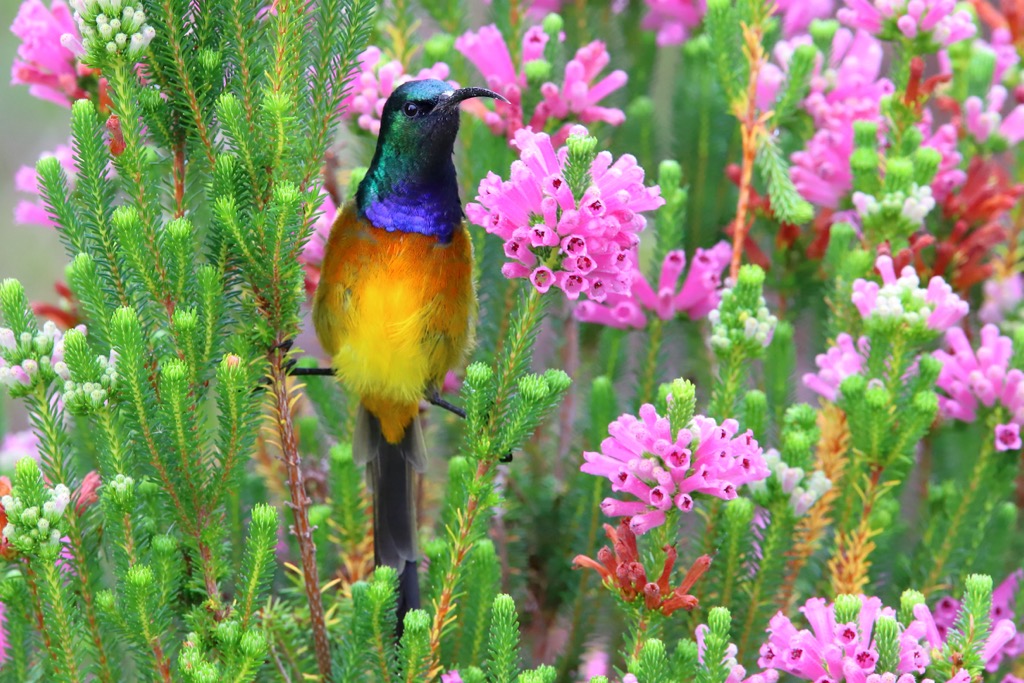
Along its coastline, the meeting of the two oceans gives rise to diverse marine habitats, fostering a multitude of marine life, from fish to seabirds. Bird enthusiasts are treated to a spectacle of over 200 bird species, including iconic seabirds like African penguins and Cape gannets, while marine mammals, including migrating whales and playful dolphins, grace the coastal waters.
The Agulhas features a mediterranean climate defined by generally moderate temperatures and warm, dry summers. Not only is this climate the most sought-after on Earth, but it is also one of the rarest. The western Cape of South Africa is one of the few places in the world featuring this rare ecosystem. Outside of the Mediterranean Sea, only the coasts of California, Chile, southwestern Australia, and the Western Cape boast a Mediterranean climate.
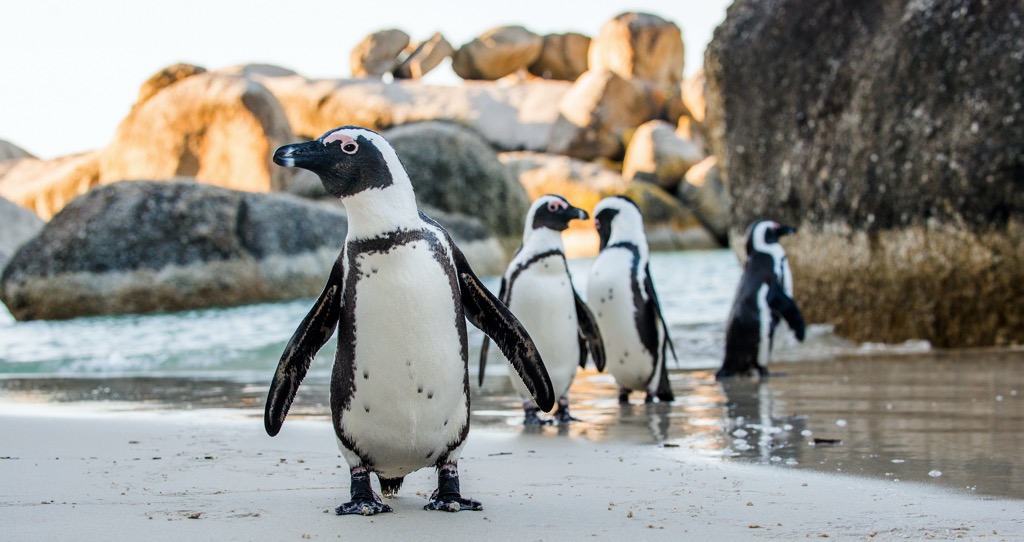
The history of Cape Agulhas National Park spans over a million years. Vestiges including stone tools, fish traps, shell piles, and rock art reveal the presence of inhabitants from the indigenous communities of the San and Khoihkoi.
The region's maritime significance dates back to Portuguese exploration in 1488. The park features sharp outcrops scattered along its coast giving rise to it’s name, which means needle in Portuguese. European explorers arrived in the 1770s, bringing a new era to the region. By the 1800s, farms began to spring up inland and an economy was born.
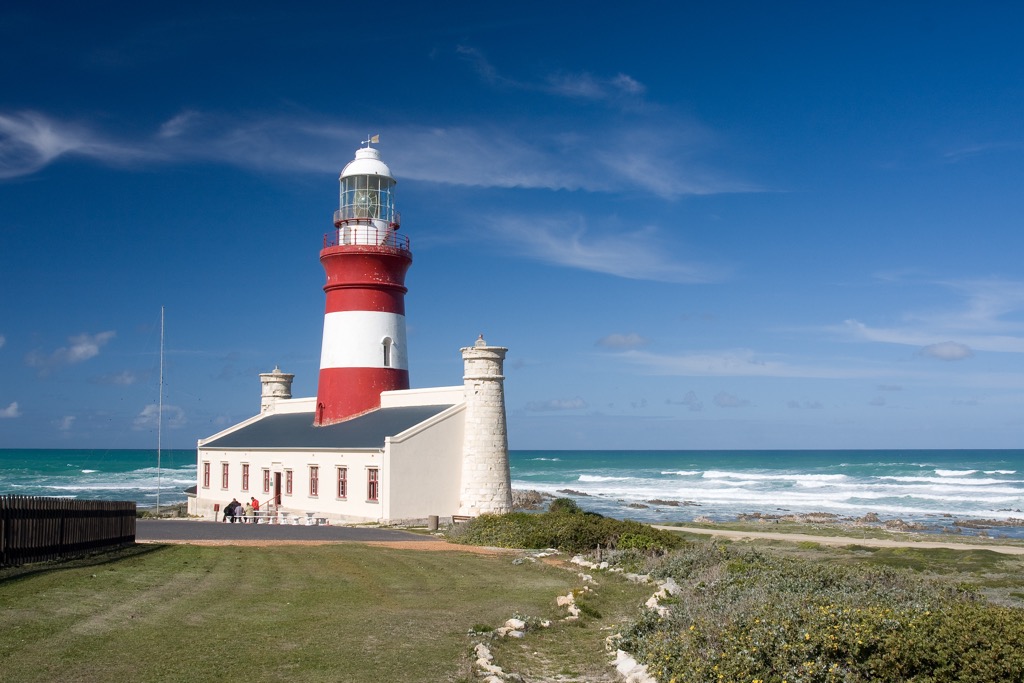
The Cape Agulhas Lighthouse is a standout landmark built in 1849 to help ships avoid the dangerous coastline. On 14 September 1998, Agulhas National Park was established, starting small and later expanding to its current size. This expansion ensures the protection of the park's natural beauty and the historical layers that have shaped it.
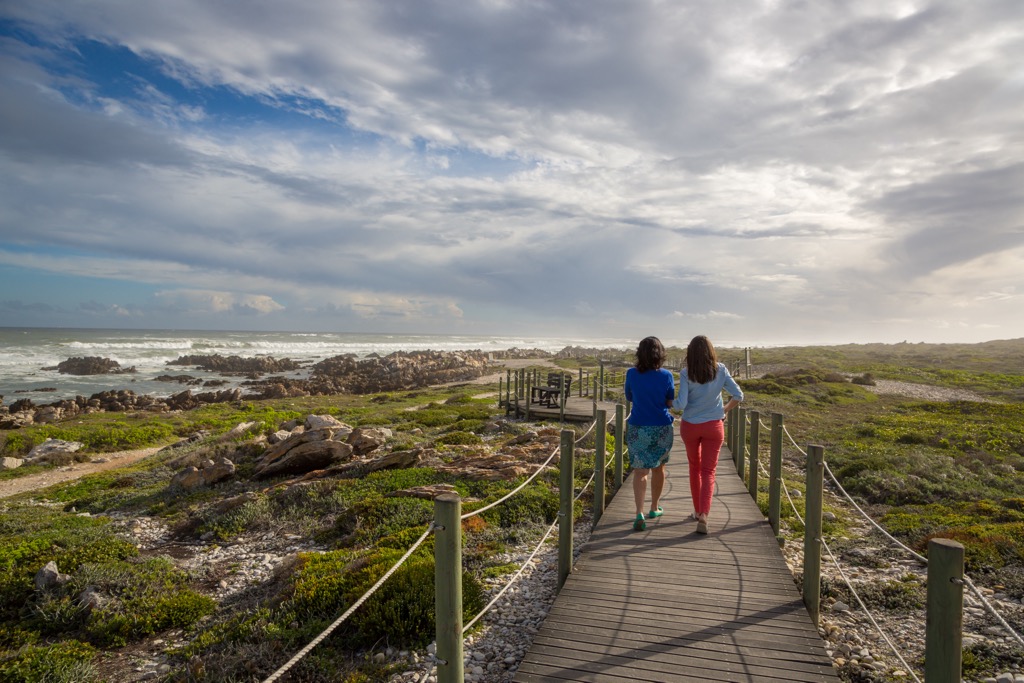
The Two Oceans Hiking Trail ia a circular path spanning 10.5 km (6.5 mi) that commences and concludes at the Agulhas National Park Rest Camp. The roughly four-hour journey showcases picturesque coastline, dune fynbos, and the southernmost extremity of Africa.
The trail is designed to accommodate a wide range of fitness levels and can be enjoyed throughout the year. However, it's advisable to steer clear of the midday heat and plan around low tide.
The Two Oceans Hiking Trail is an excellent starting point for whale sightings. Between June and September, you’ll likely spot these magnificent creatures from different viewpoints along the trail.
Other points of interest include the shipwreck coast and the African Continent Monument, a remarkable metallic sculpture marking Africa’s southern extremity. The journey also encompasses a visit to the Cape Agulhas Lighthouse, which is considered Southern Africa's second-oldest operational lighthouse.
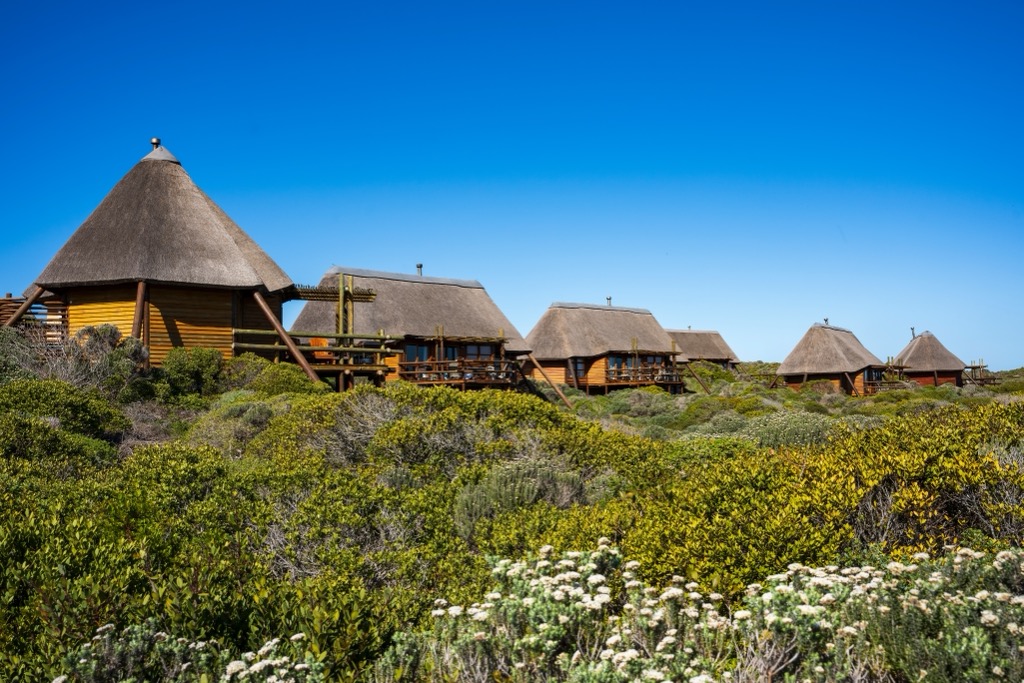
The Rasperpunt Hiking Trail is a 5.5 km (3.4 mi) circular route that commences and concludes at the Meisho Maru 38 shipwreck, a Japanese tuna vessel grounded in 1982. The trail is marked by distinctive white shoe prints and is easily navigated using a self-guided interpretive booklet available at the park office.
The trail, which takes approximately three hours, offers coastal views and a chance to spot marine wildlife. Other notable sights include the ancient Stone Age fish traps, which locals still use. Moreover, a hidden freshwater fountain merges into the sea, attracting birdlife like black oystercatchers and Rasperpunt.
The area's diverse flora and fauna includes bush-tick berries, historically used for soap making and insect repellent.
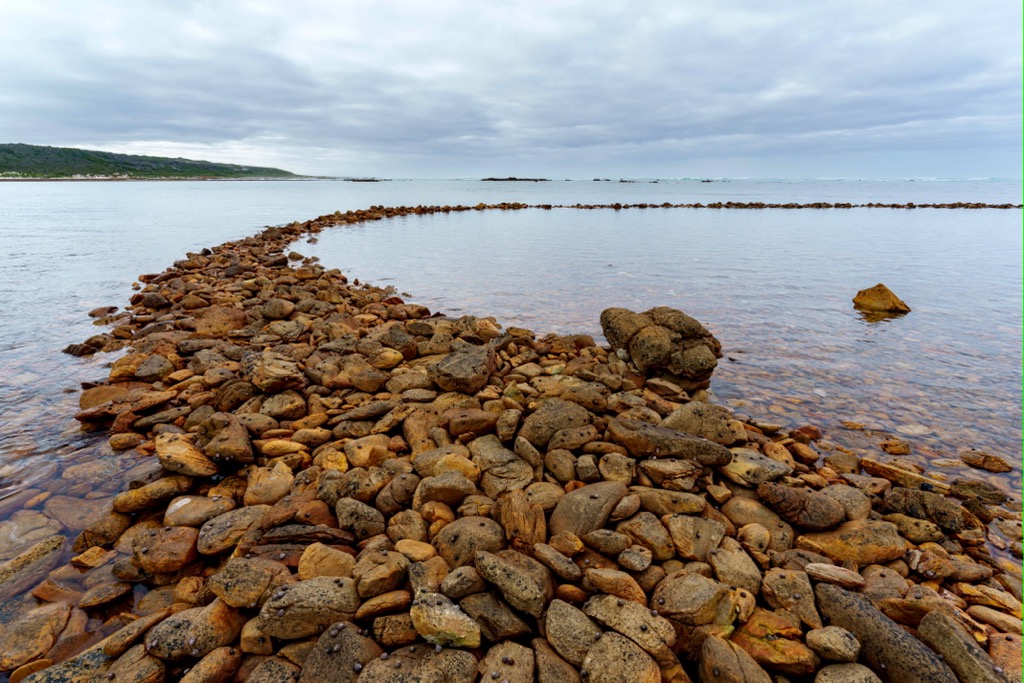
The Cape Agulhas Lighthouse holds the distinction of being the southernmost beacon on the African continent. It was erected in 1849 out of limestone and faithfully served as a crucial guiding beacon for the treacherous waters of Cape Agulhas for over 100 years. It has been deactivated since 1988.
Within the lighthouse complex lies a museum chronicling the region’s history, including exhibits on the fish traps used by the indigenous Khoisan people. Ascending the 71 steps to the summit offers panoramas of the coastline, adorned with shipwrecks, as well as the confluence of the two oceans.
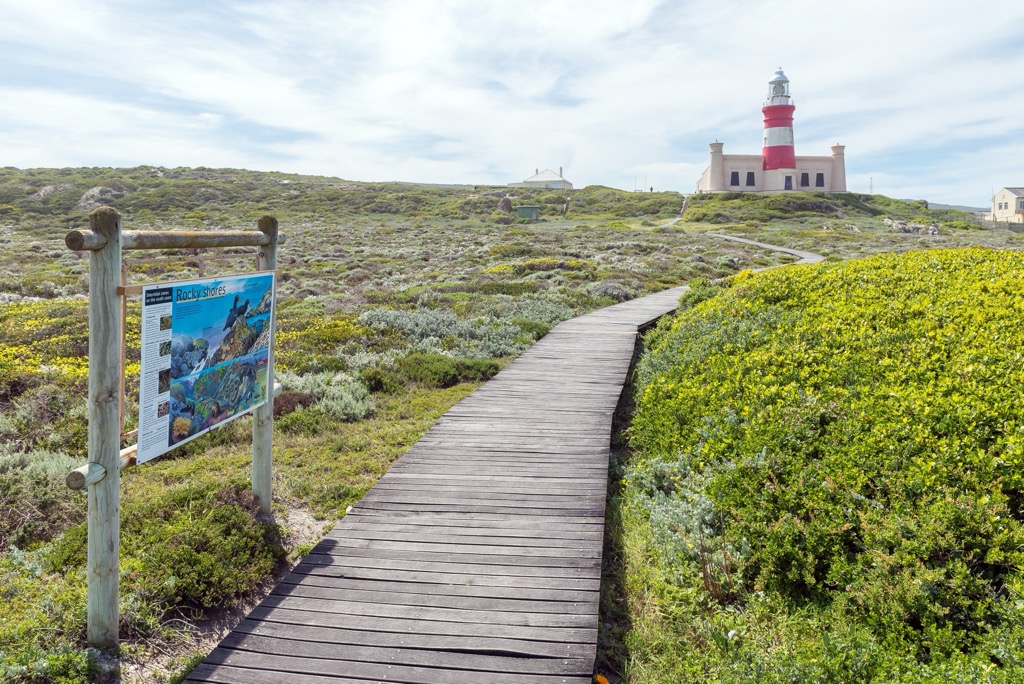
Spanning from Quoin Point to Cape Agulhas lies the Shipwreck Coast of 140 marooned vessels. Known as the Cape of Storms and the Ships' Graveyard, this area is host to the tragic fate of numerous boats on treacherous rocks and reefs.
Significant maritime disasters include the first shipwreck on South African shores, the Johanna, in 1682, carrying precious cargo of silver and gold. The Nossa Senhora dos Milagros, a Portuguese ship, was raided for its valuable cargo four years later. Other notable shipwrecks are the HMS Birkenhead in 1852, whose sinking introduced the women and children first policy, and the HMS Arniston, which perished during a storm in 1815. The most recent addition is the Meisho Maru 38 from 1982, a Japanese fishing boat whose crew survived.
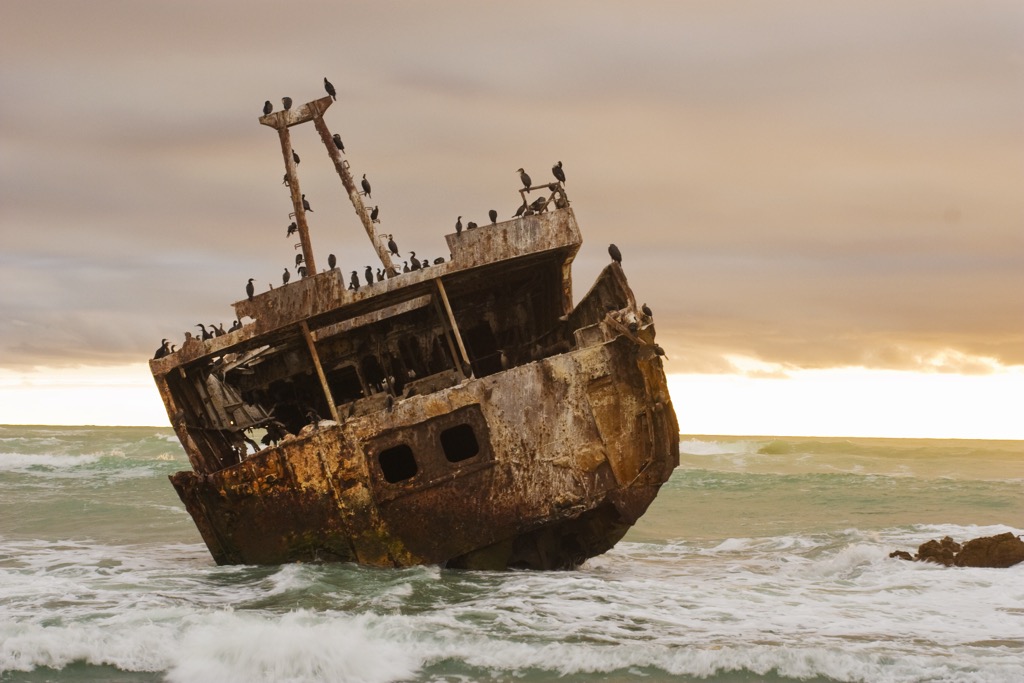
Alongside its historical significance, this coastline offers a glimpse into Agulhas National Park's natural beauty of panoramic ocean views and fynbos vegetation. The nearby Bredasdorp Shipwreck Museum exhibits artifacts and stories from these wrecks, as well as local history and culture.
The renowned location of the Southernmost tip of Africa signifies the exact meeting point of the Indian and Atlantic Oceans. Marking this southern extremity is highlighted by a stone cairn and a plaque proclaiming it the Official Geographic Southern Tip of the African Continent.
The landscape encircling the southernmost tip of Africa is a sight to behold. The untamed shoreline is marked by rugged cliffs and tumultuous waves. The coastal dunes and all-encompassing ocean vistas are accessible to visitors.
The Cape Agulhas Wine Route is a haven for those who adore wine and the great outdoors. Covering the wine districts of Elim, Malgas, Swellendam, Cape Agulhas, and Napier, this region is renowned for its refreshing climate, oceanic influences, and robust wines that perfectly represent the diverse ecosystem. Sauvignon Blanc, Semillon, and Shiraz are a few of the grape varieties in this region.
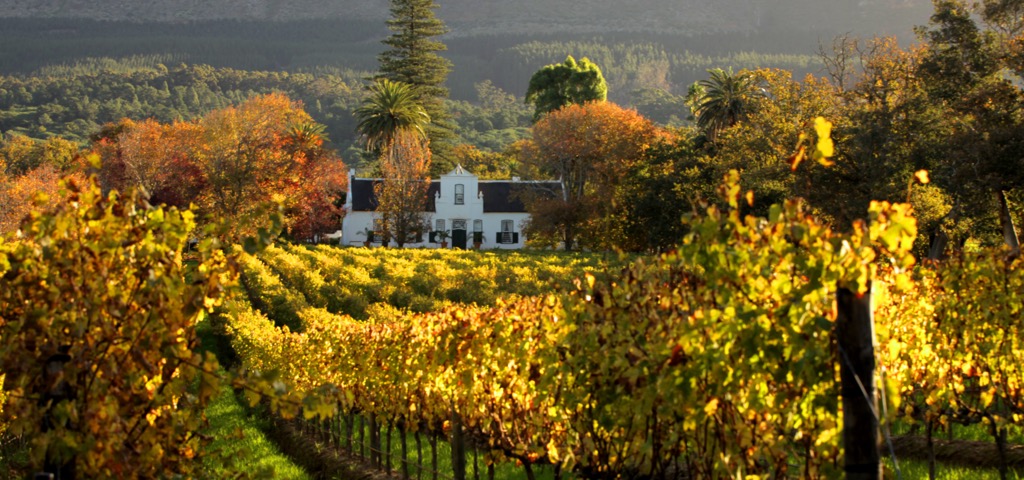
As one of South Africa's most renowned destinations, Cape Town offers an experience for travelers seeking a perfect blend of adventure, relaxation, and cultural exploration. Whether you're an adventure seeker, a history buff, or a lover of scenic beauty, Cape Town has something to offer.
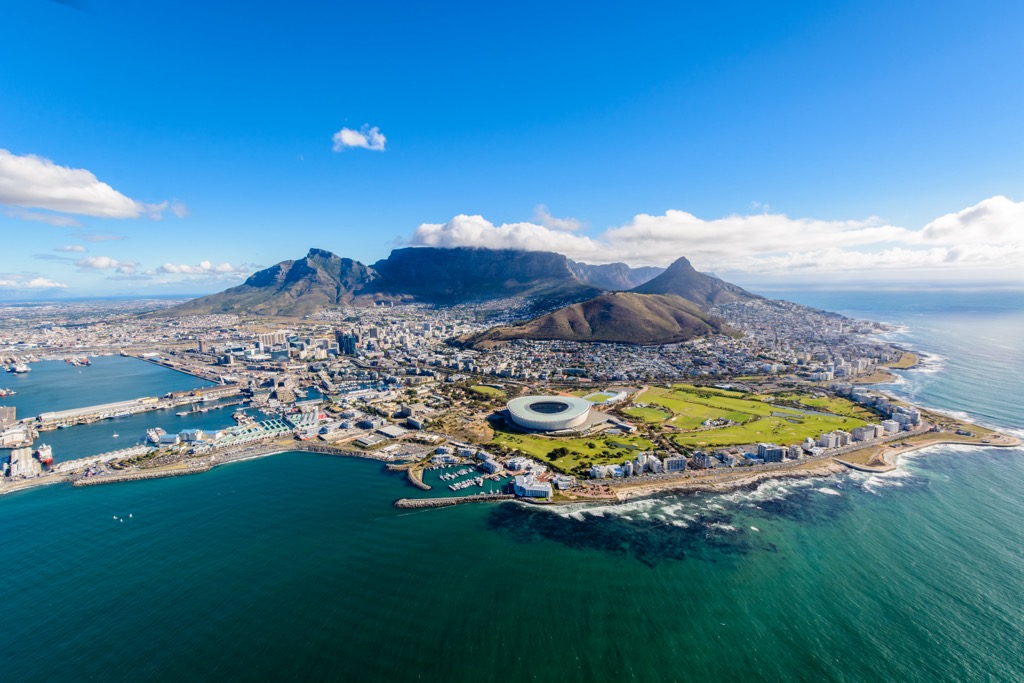
Towering over the city, Table Mountain is a defining geographical feature and a must-visit attraction. A cable car ride or a challenging summit hike affords you breathtaking panoramic views of the city, ocean, and surrounding hilly landscapes. Sunset or sunrise vistas from this vantage point are breathtaking, and there are many other scenic trails in Table Mountain National Park to explore.
The Victoria & Alfred Waterfront showcases a diverse range of boutiques, craft markets, and galleries set against the backdrop of Table Mountain. For those seeking an alternative to shopping and dining, the atmosphere comes alive through the talents of performers, musicians, and street artists. Alternatively, a stroll along the charming harbor showcases the picturesque Table Bay.
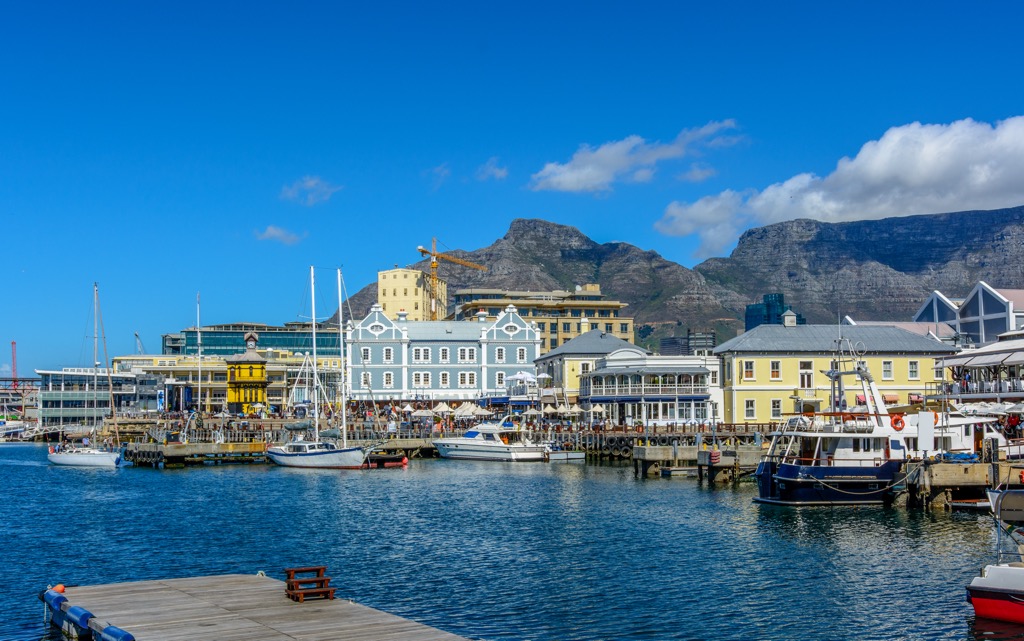
A short boat ride from the Victoria & Alfred Waterfront is Robben Island, a UNESCO World Heritage Site and a symbol of South Africa's struggle against apartheid. Join a guided tour led by former political prisoners, providing an intimate and poignant look into the nation's history. The tour includes a visit to the prison cell where Nelson Mandela spent much of his 27-year incarceration.
In fact, if you’re coming from abroad, it’s easy to incorporate a visit to Cape Town into your trip. The closest airport to Agulhas National Park is in Cape Town and is 223 km (139 miles) away. Car rentals are affordable in South Africa and we recommend you exercise this option for your trip; the expected duration of the drive is approximately 3 hours.
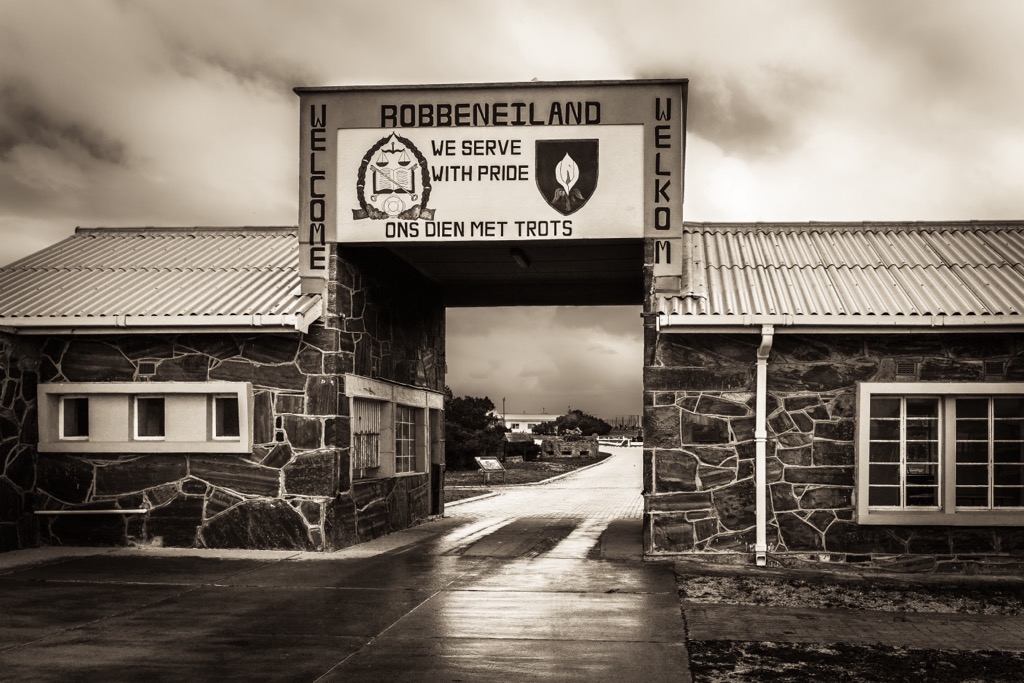
Hermanus is a coastal town renowned as the Whale Capital of the World. The town's allure lies in its harmonious blend of scenery, outdoor recreation, and a vibrant art scene and community.
From June to November, southern right whales migrate to the waters of Hermanus and are visible from several scenic viewpoints, such as the Cliff Path. If you want a closer inspection of these gentle giants, you can board a whale-watching boat tour.
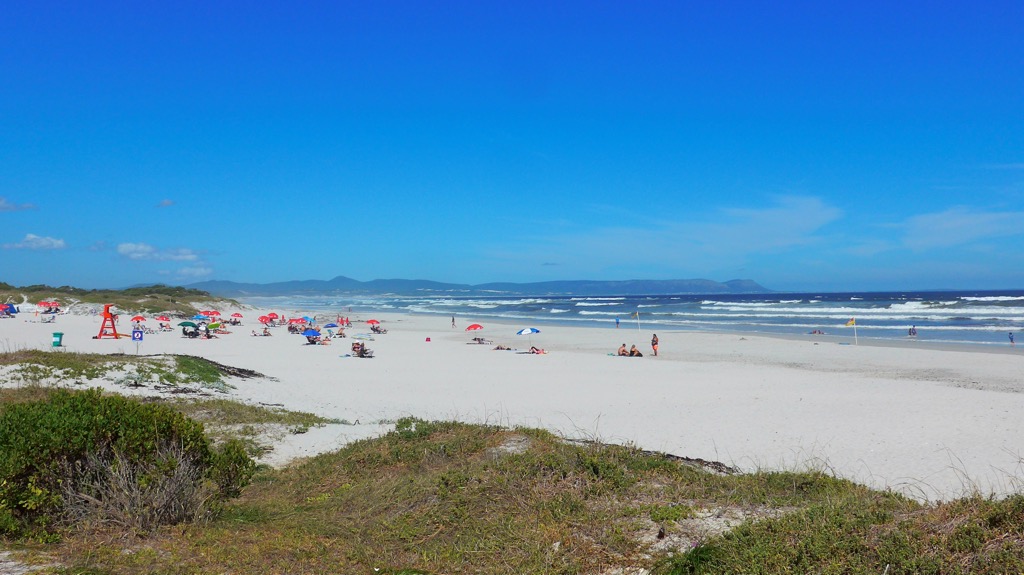
Beach lovers should venture to Grotto Beach, with its sweeping coastline and pristine sands. Apart from sunbathing and swimming, this Blue Flag beach is perfect for kayaking, paddleboarding, and snorkeling. For a bit of adventure, the Walker Bay Nature Reserve, located nearby, offers hiking trails that wind through fynbos-covered hills, providing picturesque views of the ocean and the surrounding landscapes.
Finally, wine enthusiasts are in for a treat with the nearby Hemel-en-Aarde Valley, known for producing high-quality wines such as Chardonnay and Pinot Noir. Many of the wineries in the area welcome visitors for tastings and tours, providing insights into the winemaking process and a chance to savor some of South Africa's finest vintages. The picturesque vineyard settings add to the overall experience.
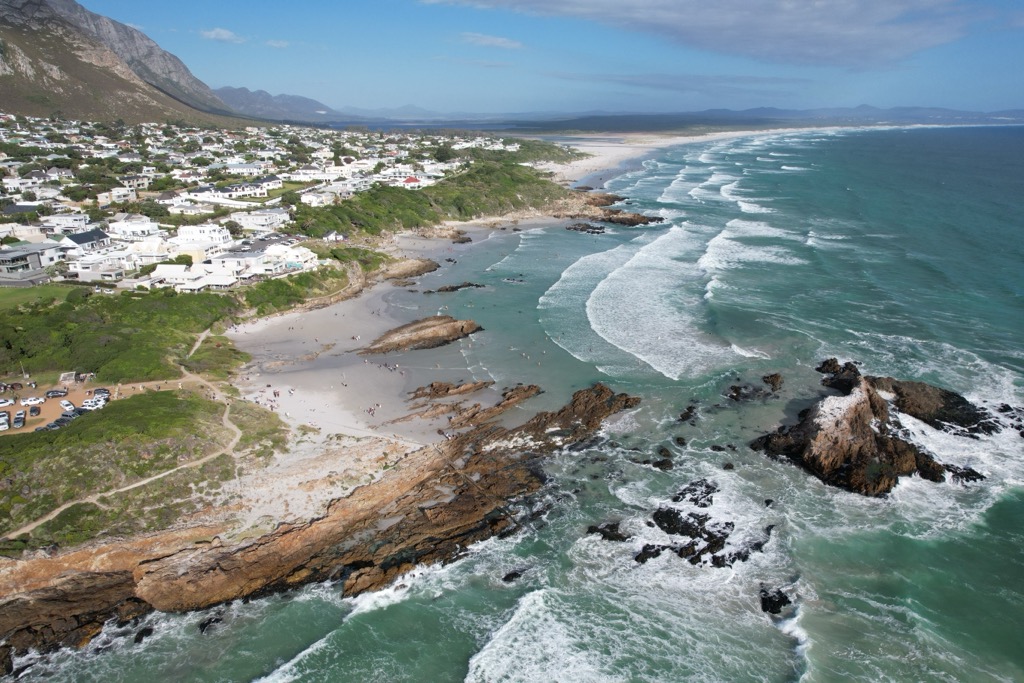
Explore Agulhas National Park with the PeakVisor 3D Map and identify its summits.








